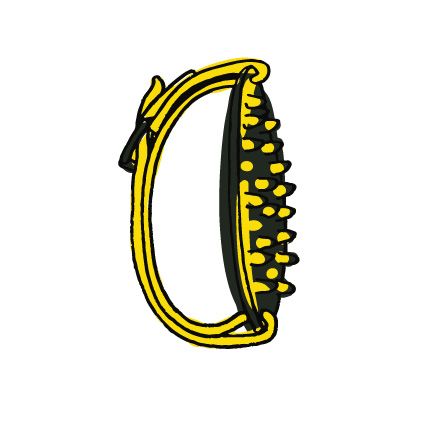
Történt pedig egy napon, hogy az egyik online adásvételi csoportban felbukkant egy furulya, amelyet 2020. július 6-án ajándékozott a múzeumnak Imre János családja. A családdal való beszélgetés során kiderült, hogy egy ezermester volt a nagybácsi. A sok asztalos mestermunka mellett, szívesen kísérletezett a mindennapi élet eszközeinek tökéletesítésén. Így készült el a sok családban a nagymama kezén gyakran látott és sokak által kipróbált kézi morzsoló.
A balatonkenesei asztalos 1934. január 31-én egy kézi tengerimorzsolóról adott be szabadalmi kérelmet, amit az 1934. évi szeptember hó 15-én a Magyar Királyi Szabadalmi Bíróság által kiadott Szabadalmi leírásban így jellemez:
„A találmány szerinti kézi tengerimorzsoló minden forgalomba hozott kézi tenegrimorzsolótól lényegileg abban különbözik, hogy a kézen szilárdan rögzíthető és kézforgatással bármely idomtalan és kisátméretű tengericsőről a legkisebb szemet is maradék nélkül leszedi. Közbeeső munka végezhető anélkül, hogy a készüléket a kézről le kellene csatolni, miáltal sok idő megtakarítható. A morzsolást végző alkotórész a kéztenyér alakjához simulóan idomított lemez, amelyből a morzsolást végző fogak kiállanak. A készülék vagy sajtolással, vagy öntvényből állítható elő.”
A kézi tengerimorzsoló prototípus 2 változatát kaptuk meg: egy öntöttvasból és bőrszíj felhasználásával készítettet és egy lemezmarkolatút. Mindkettő a Néprajzi gyűjteménybe került és örömmel mutatjuk be a látogatók számára.
Lipéczné Karsai Henriett
néprajzos muzeológus
Erre haladjon tovább:
Mögöttünk a tűzoltó készülék egészen Szigligetig repít bennünket.
One day, a flute appeared in an online sales group, which was gifted to the museum on July 6. 2020 by the family of János Imre. After some talks with the family, it came to light that the old man was a jack-of-all-trades. Along with his many masterful carpentry works, he loved to experiment with perfecting the different tools of everyday life. The manual corn sheller that could be seen in the hands of many grandmothers was also created this way.
The carpenter from Balatonkenese, submitted a patent application on the 31st of January in 1934, for a manual corn sheller. In the patent description issued by Hungarian Royal Patent Court on September 15, 1934, the item was described as follows:
„The invention differs from all previously marketed corn shellers, in that it can be securely fastened to the hand, and with the motion of the hand it can completely remove even the smallest kernels even from the most amorphous cob of corn. Any intermediate work can be done without removing the tool from one’s hand, as such, plenty of time can be saved. The components responsible for the shelling, a metal sheet that was molded to the palm of the hand, with teeth protruding for shelling. The tool can be produced by pressing or casting methods.”
Rough translation of original
old Hungarian description
We received two prototypes of the manual corn sheller: one made with cast iron and leather straps, and another with a sheet metal handle. Both of these items became part of our ethnographic collection and we are happy to present them to our visitors.
Henriett L. Karsai
ethnographic museologist
Proceed to this:
The fire extinguisher behind us will take us all the way to Szigliget.